Apr 19, 2025
Author:Amanda Lyu
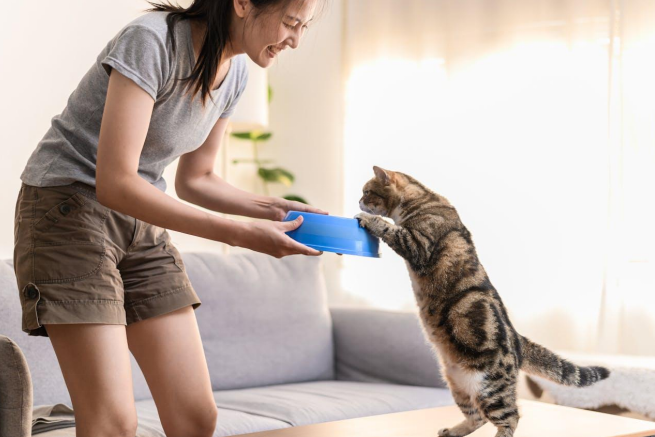
If you're a cat owner, that responsibility obligates you to feed your feline friend well enough, to keep him supplied with enough play, to ensure he gets routine veterinary care and to place him in an emotionally safe environment.
With the help of some necessary tips, you can maintain a healthy, happy and thriving cat for years to come. From choosing which food and litter, to understanding common illnesses and destructive behaviors, I have covered just about everything that one needs to know in this comprehensive guide.
These tips will help you build a strong bond with your new or old friend no matter if you are a new cat guardian, or a cat veteran. Read on to read about the 14 things you must do to keep your cat healthy and happy.
Cats are obligate carnivores; good diets for them consist almost entirely of high quality animal proteins. When selecting a cat food, choose products that list real meat or fish as the first ingredient. Avoid foods with by products, fillers such as corn or wheat, artificial preservatives, colors and flavors. Use WOpet’s automatic pet feeder for on-time nutritional value.
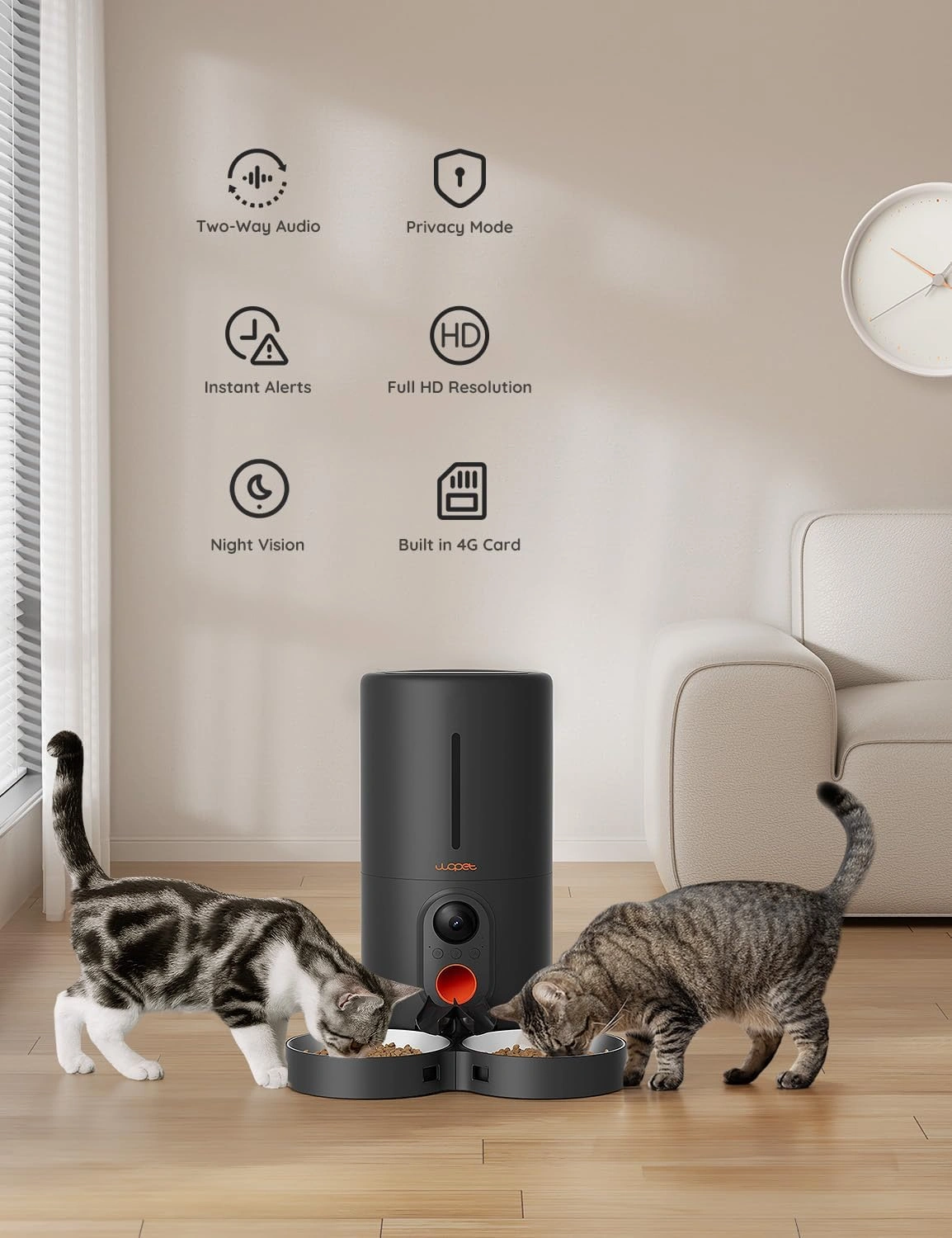
Alt text: wopet automatic pet feeder
Both wet and dry food have their advantages. Such wet food has high moisture for hydration, and dry kibble helps to scrap tartar off the teeth. A combination of feeding two or more creates variety, keeps your horse’s diet interesting and reduces boredom. You should also provide your cat with unlimited access to clean fresh water, changing it daily to keep your cat healthy.
Portion cats food according to cats age, weight, and activity level. Obesity guys is leads to heart strain, joint strain, ‘till you over feed us, and under feeding results in nutritional deficiencies and organ damage. Watch your cat’s body condition score and maintain food intake accordingly. Total caloric intake should be less than 10% of total caloric intake.

A consistent grooming routine keeps your cat’s coat clean, reduces hairballs, and gives you a chance to check for abnormalities. Brush shorthaired cats weekly and longhaired cats daily using a slicker brush, detangling spray, and steel comb.
Bathe cats on an as-needed basis using gentle, cat-safe shampoos. Trim nails every 2 weeks to prevent overgrowth and injury. Inspect ears weekly for redness or discharge. Schedule professional dental cleanings every 1-2 years to manage plaque and tartar.
Despite being indoors, cats still face threats from parasites. Apply monthly flea and tick prevention year-round, even during colder months. Deworm kittens starting at 2 weeks old, repeating every 2 weeks until 12 weeks when they can be transitioned to a monthly preventative to keep your cat healthy.
Your veterinarian will also ask about vaccines to prevent panleukopenia, calicivirus, rhinotracheitis, rabies, feline leukemia and other deadly diseases. Spayed/neuter between 5 – 6 months to lessen roaming, aggression and markering, and at the same time lower cancer risks.
All cats are at risk for having problems seen early through annual checkups, even the healthiest seeming ones. Your cat’s heart and lungs will be listened to by the veterinarian, the abdomen palpated, eyes and ears checked, your cat weighed, diet and litter box habits reviewed, testing recommended and vaccines updated.
Visits should be biannual for older cats (of course, adults may be as healthy as kittens) and for felines with medical issues or conditions. Symptom tracking includes changes in appetite, activity level, litter box use, breathing or behavior helps with accurate diagnoses. Be attentive to the subtle signs of illness of your cat.
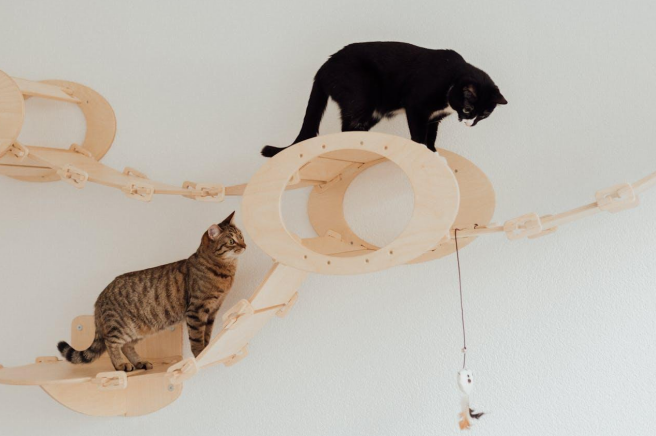
Cats are by nature hunters, and therefore have outlets built into them that they need to channel their predatory instincts. Engage in play with interactive toys like wands, balls and treat puzzles at least 15 minutes a day. Create DIY toys by tying feathers onto strings or sticks. Rotate toys to prevent boredom. Laser pointers, though popular, shouldn’t be used excessively as they can frustrate cats.
Provide scratching posts, cat trees, and perches for climbing and stretching. Open windows allow safe outdoor viewing. Harness train cats for outdoor walks. Discourage play with hands and feet which can lead to injuries. Interactive play strengthens bonds while preventing obesity and anxiety to keep your cat healthy.
Cats are fastidious creatures relying on clean litter boxes. Scoop solids out daily, replacing clumping litter weekly or non-clumping variations every other day. Wash boxes with soap and hot water monthly or whenever visibly dirty. Use non-toxic, unscented litters.
Provide one more box than the number of cats in your home, placed in quiet, accessible areas.
There are countless hazards in your home for curious cats. Braces, anchors or wall mounts can fasten secure the unstable furniture, TVs or shelves to wall to avoid tipping incidents. Electrical cords or some type of protective tubing to prevent from being chewed because it is dangerous because they may be electrocuted.
Cabinets containing medications, cleaners or toxic foods should be secured with child locks. Toilet lids should remain closed, garbage containers put away. Put away fragile items and put houseplants that are poisonous out of reach. Sharp table edges also need to be covered with corner guards.
Cats generally hide illness well and changes in appetite, activity level, litter box use, or personality are signals of stress or illness. Feed/feedings, play/play routines, and furniture placement should be consistent. Make changes gradually, like slowly switching foods or adding new pets.
They should be provided hiding places like cardboard boxes, cat tunnels, or high sided beds. To calm anxious cats, use synthetic pheromones through plug in diffusers or sprays and also keep your cat healthy. Any stress symptoms that last longer than a few days should be talked about with your veterinarian regarding prescription anti-anxiety medication.
Understanding your cat's unique vocalizations and body language fosters deeper bonds while clues you into their wellbeing.
Vocalizations have meaning too. Meows say “hello,” ask for food, or get attention. Trills and chirps are more positive while yowls, hisses, and growls signal irritation or threats. Excessive meowing or crying could indicate cognitive decline, illness, injury, or declining senses dulling environmental awareness.
Neglected teeth accumulate plaque and tartar leading to gingivitis and tooth loss. Brushing is the gold standard but requires patience. Use a finger brush or wrap gauze around your finger with beef or poultry toothpaste. Lift lips to expose teeth. Rub gently back and forth for 30 seconds per side as your cat tolerates, rewarding cooperation.
Alternatives include dental gels applied to teeth or mouthwashes added to drinking water. Also consider dental diets, treats, and chews. See your veterinarian routinely for professional cleanings and oral exams, sedating cats if homecare proves difficult.

Prevent boredom by offering puzzle feeders and toys promoting active problem-solving. Place dry food inside balls with openings, in toilet paper rolls with taped-on ends, or underneath plastic bottles weighted with a few pebbles. Start slow until your cat learns food emerges through play.
Train cats using positive reinforcement. Use clickers marking desired behaviors followed immediately with treats. Begin with basics like sit, lie down, come, stay, high-five, spin, jump through hoops, or ring bells to open doors. Mental exercises prevent destructive behaviors stemming from unspent energy.
The moisture in canned foods keeps cats optimally hydrated, promoting urinary tract health. Look for grains-free options in delicious broths. Adding water to kibble boosts fluid intake and helps to keep your cat healthy. Fountains circulate filtered water, enticing drinking. Leverage cats’ keen sense of smell by adding tuna juice or bone broth to water.
Monitor intake and litter box habits. Straining, frequent attempts, bloody urine, crying, or inappropriate elimination indicates sickness. Male cats are especially prone to blockages. Catching lower urinary tract disease early minimizes lasting damage. Ask your veterinarian about urinary health diets and supplements.
Part fur near the skin, peering at the base for tiny dark specks. Fleas leave black, gritty excrement called flea dirt. Use a flea comb to check for live insects. Also scan for tiny white eggs adhering to hair shafts. Ticks embed in skin, sometimes visible around head and neck areas.
Consult your veterinarian about topical spot treatments, collars, shampoos, sprays, powders, or oral preventions. Treat indoor and outdoor pets simultaneously and vacuum thoroughly to remove eggs and larvae from the home. Also inspect bedding, furniture, carpets, and yard for contamination.
Regular examinations from head to tail should be performed because cats excel at concealing their illnesses. Observe your cat for signs of limping alongside vision or hearing impairment as well as coughing and sneezing and wheezing and gagging and skin abnormalities and weight changes and appetite changes. A pet health journal should contain records of symptoms alongside food intake and medication use and litter box activity and other significant events.
A sudden personality shift which includes hiding behavior or aggressive tendencies or excessive neediness or extreme tiredness signals illness. Breathing rates and effort should be monitored because open-mouth breathing indicates a serious problem. Disease indicators can be detected through changes in litter box behavior and urine or stool appearance and smell. Consult your inner sense if circumstances appear abnormal.
Owning a cat demands work, but it brings unlimited life enrichment because of their affectionate nature and devoted personality and playful spirit, and friendship.
Record concerning changes and trust your intuition to keep your cat healthy. Seek input from professionals when unsure how to interpret or address new developments. With attentive, proactive care and lots of love, cats become cherished family members for their entire lifespan, amply rewarding diligent guardians.
Label:
Popular Post

What to Feed a Sick Dog With No Appetite? [2025 Guide]
May 16, 2023

Troubleshooting Common Issues with Automatic Pet Feeders: Tips & Tricks for Pet Owners
Oct 26, 2023
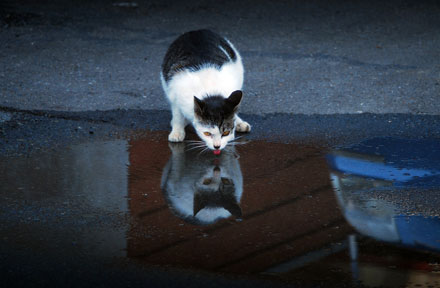
Why Does My Cat Cough After Drinking Water? 8 Potential Reasons
Mar 13, 2023
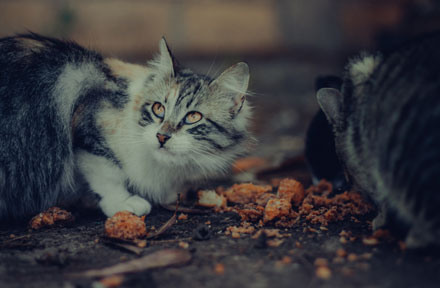
My Cat Only Eats A Little at A Time - What to Do?
Feb 27, 2023
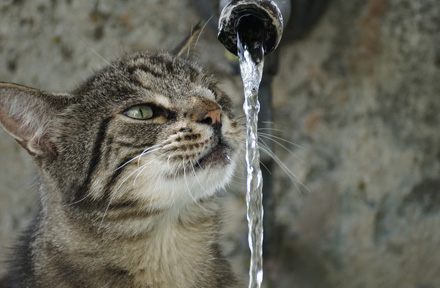
Why is My Cat Throwing up Water? Top 5 Causes Here
Feb 08, 2023
$99.99
$129.99
Copyright © 2025 WOPET. All Rights Reserved.